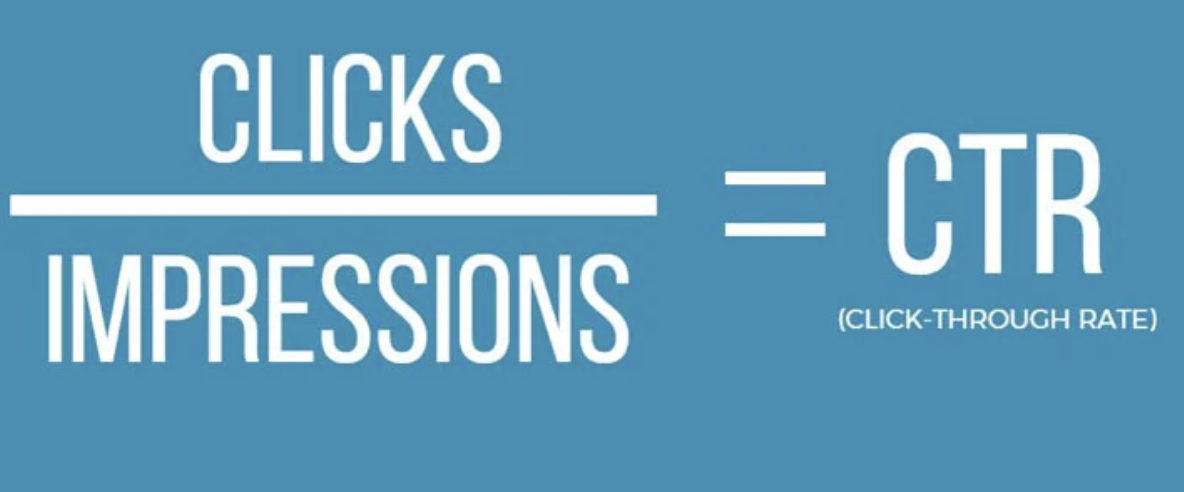The Ultimate Overview to Executing Effective CTR Manipulation Tactics
The Ultimate Overview to Executing Effective CTR Manipulation Tactics
Blog Article
Accomplishing Success With Targeted CTR Manipulation
The optimization of click-through rates (CTR) is a crucial endeavor for brand names intending to improve their digital presence and maximize involvement. Targeted CTR control incorporates a variety of techniques, from data-driven ad positionings to the development of engaging content customized to particular audiences.
Recognizing Click-Through Fees
Click-through rates (CTR) work as a vital metric in electronic advertising, showing the effectiveness of on the internet web content in driving individual interaction. This metric is calculated by dividing the variety of clicks an ad or web link receives by the overall number of impacts, revealed as a percent (GMB CTR Manipulation). A higher CTR suggests that the content reverberates well with the target market, triggering them to take action
Understanding CTR is important for marketers aiming to maximize their projects. Numerous elements affect CTR, consisting of ad positioning, design, and the significance of the web content to the audience's rate of interests. Compelling headlines and aesthetically enticing images can considerably improve the chance of individuals clicking on a web link.
Moreover, the context in which the web content is offered plays a critical role in establishing CTR. Inevitably, a detailed understanding of CTR empowers marketing professionals to fine-tune their techniques, guaranteeing that digital projects achieve their preferred results efficiently.
Importance of CTR Adjustment
In the competitive landscape of digital advertising, the manipulation of click-through prices (CTR) has actually become a crucial approach for improving campaign efficiency. CTR works as a vital efficiency sign, reflecting the effectiveness of online advertisements and material in drawing in individual engagement. A higher CTR not only signifies better rate of interest yet also can result in boosted internet search engine positions and lower cost-per-click (CPC) rates, consequently optimizing total advertising budget plans.
The importance of CTR control hinges on its capacity to notify marketing professionals about consumer preferences and behaviors. By assessing CTR information, services can determine which aspects of their campaigns resonate most with their target market. This understanding permits even more educated decision-making and the appropriation of sources to the most reliable channels.
Moreover, effective CTR control cultivates a competitive advantage. Hence, understanding CTR adjustment is not just useful; it is essential for accomplishing sustained success in digital marketing initiatives.
Strategies for Targeted CTR
Accomplishing targeted click-through prices (CTR) requires a tactical technique that includes numerous methods tailored to certain audience sections. One efficient strategy is optimizing advertisement positionings by using information analytics to identify high-performing channels. By focusing initiatives on these networks, online marketers can boost exposure and boost involvement.
Another important approach is crafting engaging headings and calls to activity (CTAs) A/B testing various variants can disclose which mixes reverberate most with the target market, thus driving higher CTR. Additionally, including aesthetic elements such as captivating photos or videos can considerably enhance appeal, making content more engaging and shareable.
Customization additionally plays a vital function; utilizing user information to create tailored content can foster a feeling of significance, resource encouraging clicks. Additionally, leveraging social evidence through endorsements and user-generated web content can develop count on, ultimately enhancing CTR.
Analyzing Individual Actions
 Comprehending customer behavior is important for maximizing advertising methods and enhancing general performance. By examining just how customers communicate with material, marketing experts can gain beneficial insights into preferences, motivations, and discomfort points. This expertise makes it possible for the growth of even more targeted projects that resonate with specific target market sections.
Comprehending customer behavior is important for maximizing advertising methods and enhancing general performance. By examining just how customers communicate with material, marketing experts can gain beneficial insights into preferences, motivations, and discomfort points. This expertise makes it possible for the growth of even more targeted projects that resonate with specific target market sections.To efficiently examine customer habits, various tools and methods can be utilized. Web analytics platforms provide data on user engagement metrics such as click-through rates, bounce prices, and time invested in page. Heatmaps and session recordings enable marketing experts to envision individual interactions, revealing which components stand out and which might be ignored.
Furthermore, user responses via studies and feedback forms can supply qualitative insights, boosting the understanding of individual sentiment and complete satisfaction. Segmenting users based upon demographics, rate of interests, and behaviors can even more fine-tune targeting efforts, tailoring content to fulfill diverse requirements.
Inevitably, continuous evaluation of user behavior is crucial for adapting marketing methods in real-time. As user fads advance, staying in harmony with these modifications ensures that projects stay pertinent and effective, fostering a deeper connection with the target market. This fundamental understanding establishes the stage for the successful execution of targeted CTR manipulation methods.
Measuring Success and Readjusting Strategies
Determining success in targeted advertising and marketing campaigns needs a calculated approach that incorporates performance metrics with continuous evaluation. Trick performance indications (KPIs) such as click-through rates (CTR), conversion prices, and customer procurement prices must be kept an eye on continually to assess the effectiveness of manipulation techniques. By developing a standard, marketers can evaluate adjustments in CTR and identify patterns that show successful engagement or potential imperfections.
Routinely evaluating these metrics enables the timely change of methods. If a specific project reveals a substantial drop in CTR, it might indicate the requirement for creative modifications or a reevaluation of targeting specifications. Employing A/B screening can better fine-tune methods by contrasting variants of ads or landing pages, supplying understanding right into what resonates best with the target audience.
Furthermore, integrating qualitative comments with surveys or user interviews can supplement quantitative information, supplying go to my site a detailed view of audience perception. Inevitably, the capacity to iteratively evaluate and improve approaches based upon real-time data fosters an extra redirected here responsive marketing method, ensuring that campaigns remain lined up with service goals and audience choices. This adaptive method is important in achieving sustained success in targeted CTR manipulation.
Conclusion
In final thought, targeted CTR manipulation is crucial for maximizing digital advertising and marketing efforts - GMB CTR Manipulation. Inevitably, effective CTR manipulation not only increases exposure but likewise promotes count on and credibility, consequently contributing to sustained development in competitive markets.
 Targeted CTR manipulation includes a variety of methods, from data-driven ad placements to the advancement of engaging material tailored to specific target markets.Click-through rates (CTR) serve as a crucial statistics in digital advertising and marketing, reflecting the efficiency of on the internet material in driving individual engagement. A greater CTR suggests that the web content reverberates well with the target audience, triggering them to take activity.
Targeted CTR manipulation includes a variety of methods, from data-driven ad placements to the advancement of engaging material tailored to specific target markets.Click-through rates (CTR) serve as a crucial statistics in digital advertising and marketing, reflecting the efficiency of on the internet material in driving individual engagement. A greater CTR suggests that the web content reverberates well with the target audience, triggering them to take activity.CTR offers as a crucial efficiency sign, reflecting the effectiveness of on the internet promotions and material in bring in user engagement.In final thought, targeted CTR adjustment is crucial for enhancing digital marketing initiatives.
Report this page